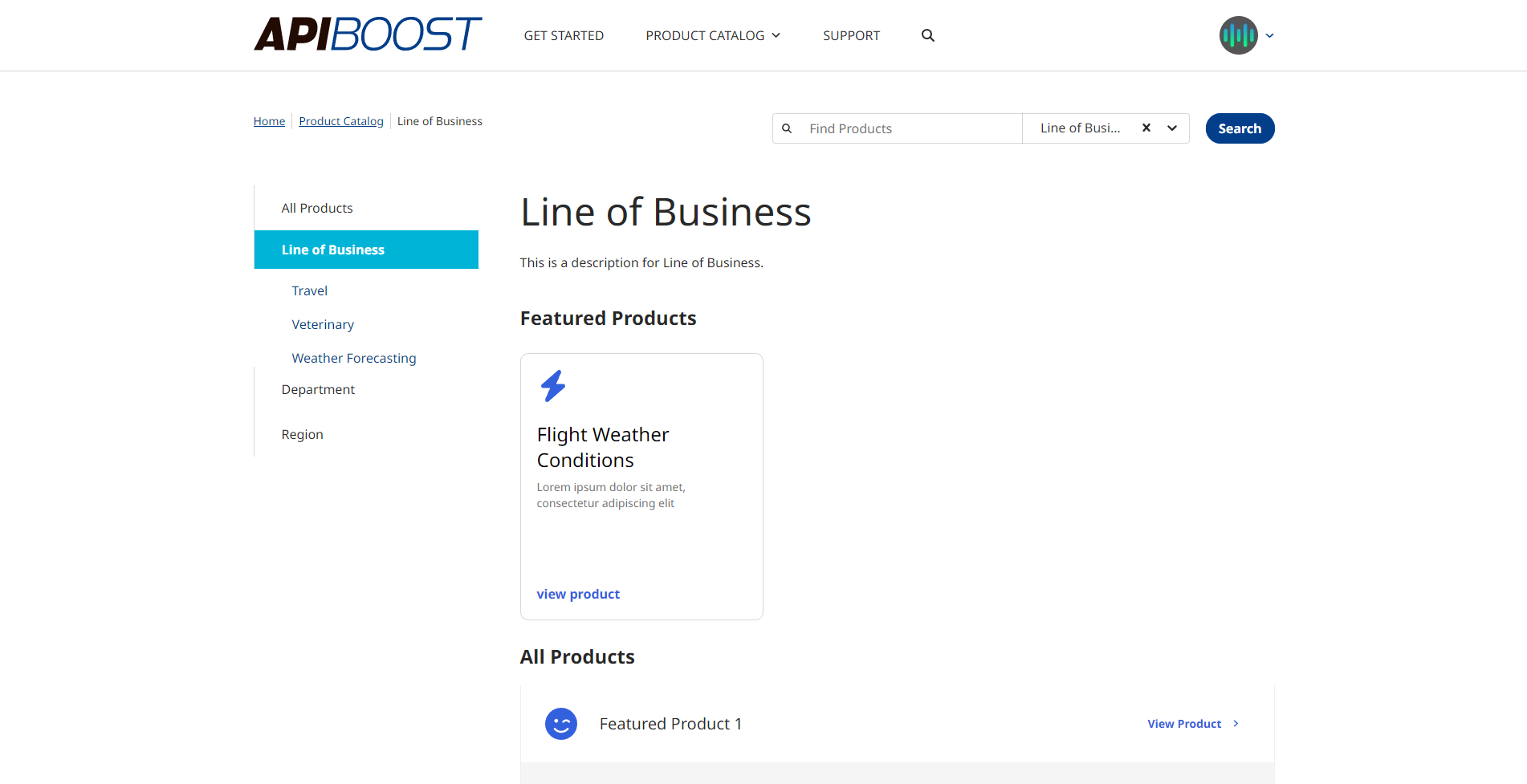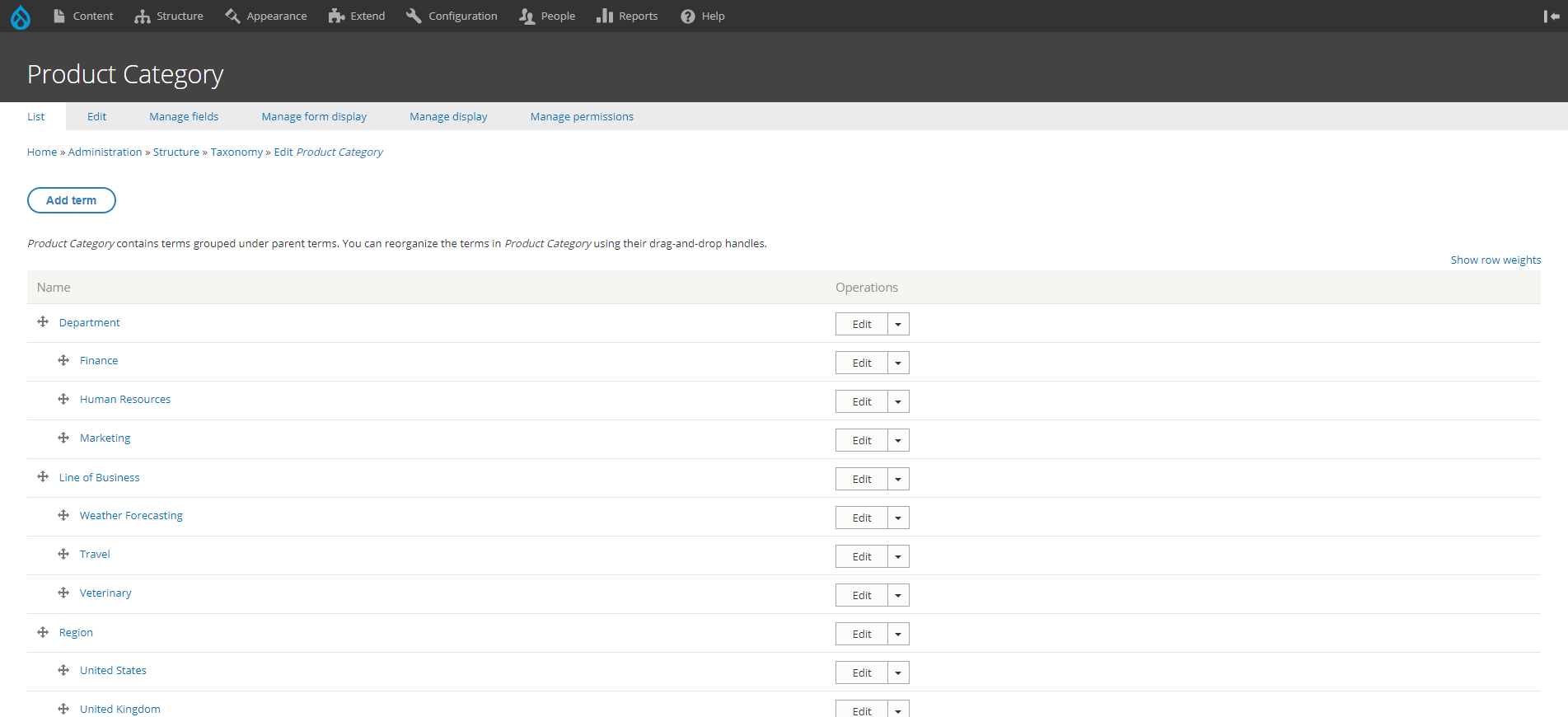Catalog Search
Learn how to organize your Apiboost product catalog with categories and filters.
Product Categories
The product catalog is categorized according to the terms listed in the product categories vocabulary. To add a new product to the website, it must be assigned to a category from this vocabulary.
During installation, the vocabulary is created with default terms arranged in a parent/child hierarchy. This arrangement serves a purpose, which can be observed by browsing through a large catalog. You will notice that parent categories in the left rail menu expand to reveal their subcategories.

Product categories in the left rail of the large catalog
This is achieved through the use of parent/child items in taxonomy. The parent item appears as a collapsible link, while each nested child item is a link within it.

The product categories taxonomy
Best Practices Using Menus
Although there are no strict limitations on the number of primary categories or subcategories, it is recommended that subcategories are relevant to their respective parent categories. This is considered a best practice in organizing the hierarchy of categories.
It’s not recommended to have more than two levels of navigation. Attempting to do so may have undesired effects.
Product Filters
Product filters are coming soon to V2!
Best Practices for Product Organization
While there’s no standard amount of API products, there’s a need to keep the product catalog as accessible and user-friendly as possible. Product organization should always be taken into consideration regardless of how many products are offered.
As volume increases, so does the need to organize. Organization can simply be using categories and filters in ways that they’re most effective.
Sometimes it helps to visualize categories and filters as a matrix. For example:
Region | Language | |
Inventory | US | EN |
Shipping Services | CA | FR |
Categories are best left to independent variables, a primary way of making a distinction between groups of products that may have nothing to do with one another. They could be entirely separate products used in conjunction with one another with no other connection besides that.
Filters are excellent macro-level search criteria for connecting otherwise independent categories. In the example above, Inventory and Shipping Services may have nothing to do with one another, but they may both be region-based. Having that in common makes region and language excellent candidates for filters.
TIP: Effective filters work across categories, but the best categories are truly unique.
Your best practices will always depend on the needs and structure of your organization.
